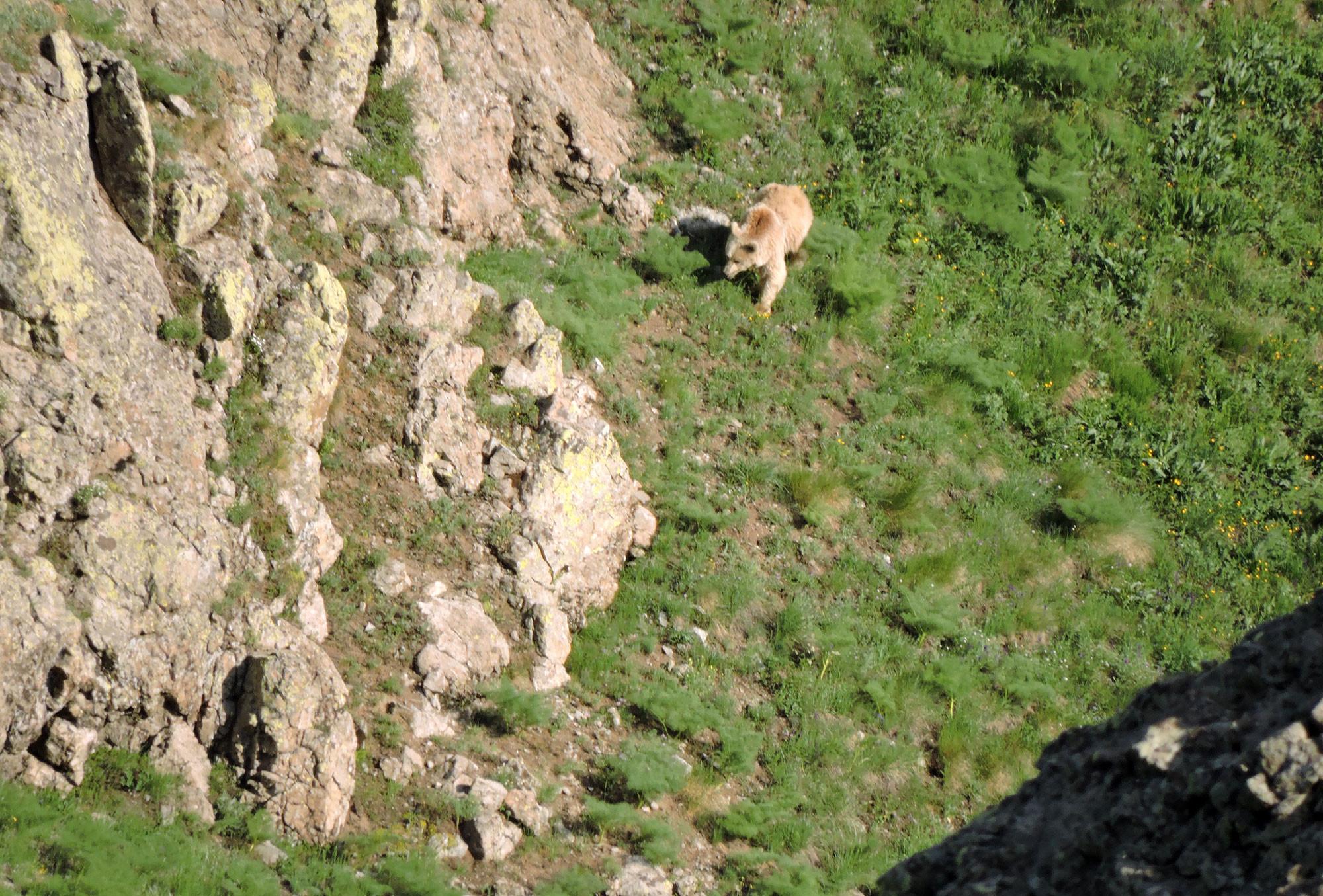
Mining Threatens Wildlife Migration Corridor Project in Armenia
In 2016, The Foundation for the Preservation of Wildlife and Cultural Assets (FPWC), an environmental NGO in Armenia, leased 5,000 hectares of land from the Vayots Dzor village of Vardahovit for 25 years.
FPWC wanted to establish a migration corridor for the area’s endangered wildlife - Armenian Mouflon, Syrian Brown bear, Bezoar goat, Black Eurasian vulture, Bearded vulture, Caucasian Leopard, Caucasian Lynx and Armenian viper.
Possible mining in the area now threatens the project. The area overlaps the Vardenis mining site where Mendia Resources LLC has applied for an exploratory permit.
The leased 5,000 hectares was to supplement the FPWC’s much larger Caucasus Wildlife Refuge (CWR), established in 2010, that ecompasses some 30,000 hectares and is the first privately protected area in the South Caucasus.
FPWC’s Environmental Programs Coordinator Tzovinar Hovhannisyan told Hetq that the while the area of overlap has yet to be determined possible mining activity does pose a threat.
Hovhannisyan says the areas in question are very important for the migration of large, endangered mammals.
“Since 2010, in Vardahovit, as in many communities in Vayots Dzor, we established the Caucasus Wildlife Refuge to safeguard the habitat of animals and plants, especially migration routes,” Hovhannisyan told Hetq, adding that the FPWC also relies on local communities to monitor conditions on the ground.
The FPWC engages local communities by offering alternate sources of income via ecotourism and investing in the renovation of community infrastructure such as improving the water supply network, providing street lighting with energy-efficient LED lamps, installing solar panels and renovating/ rebuilding the educational institutions of the villages.
“As part of the CWR project, we also organize educational and ecological courses for local residents and children,” Hovhannisyan said.
She said applications to mine in the area have been filed with the government for years.
“When we started work in Vardahovit in 2016, an application was submitted for mining on community lands, but residents decided to provide some areas for environmental purposes,” Hovhannisyan said, noting that the FPWC has strung 1.5 kilometers of LED lighting in the village.
She said FPWC not only monitors the area for illegal poaching but also uses high sensor cameras and drones to monitor the movement of animals.
“It’s an important bio-diversity area given that it is high mountain meadows. There are also subalpine and high alpine meadows, which are important for biodiversity, especially given the impact of climate change."
The FPWC’s efforts to protect wildlife in this part of Armenia has paid off.
According to the FPWC, wildlife in the area was nearly non-existent in 2010– mainly due to illegal hunting activities. Trap camera footage now shows regularly huge quantities of Bezoar goats as well as pictures of large predators like wolves, bears, lynxes and even a Caucasian leopard of which only some 8-13 are left in Armenia according to IUCN Red list.
“We have restricted human access. The territory is protected from poachers. We also regulate who can enter the area during peak animal activity and mating times," said Hovhannisyan.
She believes mining is never environmentally friendly given its short-term profit goals.
‘Our work tends to develop communities in a more long-term and more sustainable way, which unfortunately does not reflect the goals of the mining industry. It is never sustainable and mainly damages crucial wildlife habitat and animal migration routes. Furthermore, since Vardanovit is a border are, military operations also impact biodiversity and wildlife. That activity is already endangering that environment.”
Hovhannisyan says the FPWC will continue to work with Vardahovit residents and the local government to back more sustainable development models and that the organization will voice its opposition to the mining project at an upcoming public hearing.
“It is not wise to exploit all underground resources. It’s a dead end, short-term approach fraught with various dangers ranging from health to economic. We hope the environment ministry will correctly assess the possibilities of the given area and prohibit operation of the mine.”
FPWC photo of a grizzly bear in the Vardahovit area
 Videos
Videos Photos
Photos
Write a comment